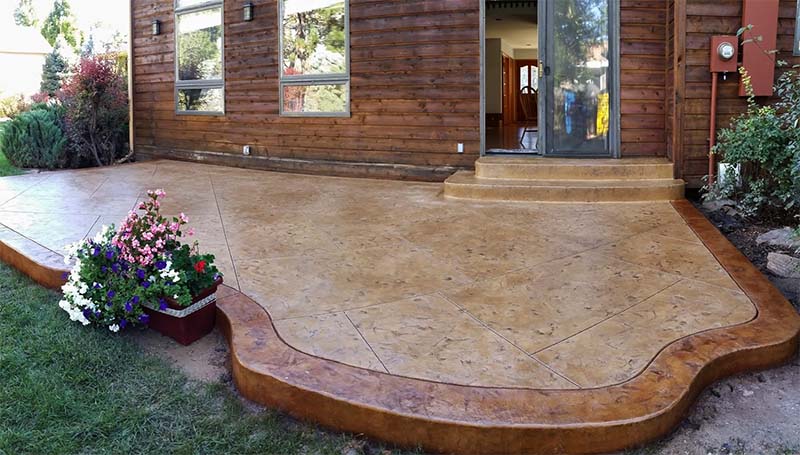You’ll encounter several common problems with concrete driveways that can affect their durability and appearance. Cracking often occurs due to temperature changes and improper curing. Discoloration is an eyesore, caused by surface stains or chemical reactions. Spalling involves chipping or flaking from freeze-thaw cycles, while scaling results in the surface breaking off in thin layers due to improper finishing. Drainage issues are important; poor drainage can lead to standing water, which results in cracks and other damage. If you know how to address these issues, your driveway can last much longer.
Cracking
One of the most common issues you’ll face with a concrete driveway Cincinnati, OH is cracking. These cracks can be frustrating and can affect both the appearance and functionality of your driveway. They often occur because concrete is a rigid material that’s subject to expansion and contraction due to temperature changes. Without proper precautions, these movements result in unsightly cracks.
To help prevent cracking, it’s important to install expansion joints. These joints are purposeful gaps placed in the concrete to allow it to expand and contract without causing damage. By absorbing the stress from these movements, expansion joints can greatly reduce the likelihood of cracks forming.
Another key factor in preventing cracks is the curing process. Curing is the method of maintaining adequate moisture, temperature, and time to allow the concrete to achieve its desired properties. If the curing process is rushed or not done correctly, the concrete won’t reach its full strength, making it more prone to cracking.
Proper curing involves keeping the concrete surface moist for at least seven days to ensure it hardens uniformly.

Discoloration
Discoloration in concrete driveways can be an eyesore, detracting from your home’s overall curb appeal. One of the main causes of discoloration is surface stains. These can come from a variety of sources, including oil spills, tire marks, and even leaves. When organic materials like leaves or grass clippings sit on the concrete for too long, they can leave behind tannin stains that are tough to remove.
Another culprit is chemical reactions. Concrete is a porous material, which means it can absorb substances that might trigger unwanted color changes. For instance, if you use de-icing salts in the winter, they can react with the concrete and cause discoloration. Even water with a high mineral content can lead to color changes over time.
To prevent these issues, it’s vital to clean your driveway regularly and avoid prolonged contact with staining agents. Sealants can also help by creating a barrier that minimizes the absorption of harmful substances.
But, if discoloration has already occurred, you may need to use specialized cleaning solutions or consider professional help to restore your driveway’s original look.
Spalling
In addition to discoloration, another common issue you might face with concrete driveways is spalling. Spalling occurs when the surface layer of your concrete starts to chip, flake, or peel away. This problem often arises due to freeze-thaw cycles. When water penetrates the concrete surface, it can freeze and expand during colder months, causing the concrete to crack and eventually spall.
Improper curing is another major factor contributing to spalling. If the concrete isn’t cured correctly, it won’t achieve the necessary strength and durability. Curing involves keeping the concrete moist for a specific period after it’s poured, allowing it to harden properly. If this process is rushed or neglected, the concrete becomes more susceptible to surface damage and spalling.
To prevent spalling, make sure your concrete driveway is installed with proper curing techniques and is well-protected against moisture. You might also consider applying a concrete sealer to provide an extra layer of protection against water infiltration.
Regular maintenance, such as sealing cracks and cleaning the surface, can go a long way in preserving your driveway and preventing spalling. Keep an eye out for early signs to address them promptly.
Scaling
Scaling, often caused by the surface of your concrete driveway breaking off in thin layers, can result from improper finishing techniques or exposure to harsh weather conditions. When the surface roughness increases, it not only looks unattractive but can also lead to further damage.
Harsh weather effects, such as freezing and thawing cycles, can exacerbate scaling. Water seeps into the concrete, freezes, and expands, causing the surface to peel away.
Incorrect concrete mix proportions or inadequate curing can make the surface more susceptible to scaling. A driveway that’s finished too quickly may trap water near the surface, which weakens the top layer. Over time, this layer breaks off, leading to a rough, uneven surface.
To prevent scaling, ensure that your concrete mix is properly proportioned and that the curing process is thorough. Applying a high-quality sealer can also protect the surface from harsh weather effects. If you notice early signs of scaling, address them promptly to avoid more extensive damage.
Regular maintenance, such as sealing and cleaning, can help keep your driveway in good condition and reduce the likelihood of surface roughness caused by scaling.
Drainage Issues
Why is guaranteeing proper drainage vital for the longevity of your concrete driveway? Without it, you’re inviting a host of problems that can compromise the integrity of your driveway.
One of the biggest issues is water pooling. When water doesn’t drain properly, it accumulates in low spots, leading to standing water. Over time, this standing water can seep into the concrete, causing cracks and surface damage.
Furthermore, poor drainage can lead to erosion control issues. When water flows off the sides of your driveway without a proper channel, it can erode the surrounding soil. This erosion not only affects your lawn and garden but can also undermine the base of your driveway.
An unstable base means your concrete is more likely to shift and crack, leading to costly repairs.
To prevent these problems, make sure your driveway is designed with a slight slope to facilitate water runoff. Additionally, installing proper drainage systems like French drains or swales can help manage excess water.